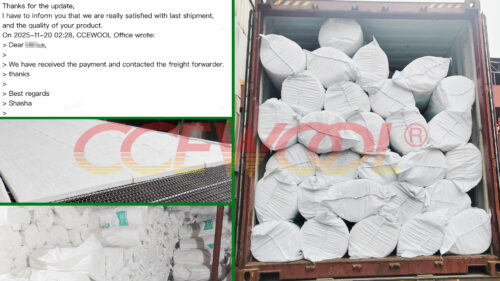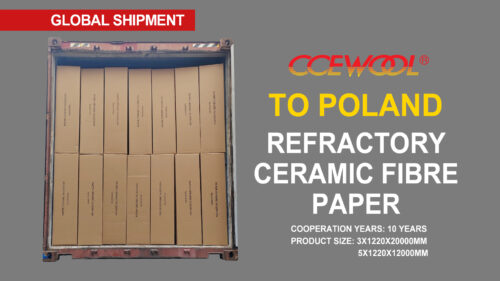Is ceramic fiber cotton safe?
- 25 Jun, 2025
- Industry

In high-temperature industrial applications, insulation materials must not only be "effective" but also "safe to use." ceramic fiber cotton is a flexible, high-performance insulation fill extensively utilized in industrial furnaces, heat-treatment equipment, and expansion joints. To address demanding conditions, high temperatures, enclosed spaces, and dust sensitivity, CCEWOOL® thoroughly enhances the safety of ceramic fiber cotton from raw materials to production, creating truly reliable insulation for global clients.
100% asbestos-free
CCEWOOL® ceramic fiber cotton is made solely from high-purity alumina and silica, with no asbestos, glass wool, or harmful mineral fibers. This prevents inhalation risks, protecting both installers and end-users. Certified by SGS and compliant with EU ROHS/REACH, it meets the highest international safety standards.
Low dust emission
Thanks to proprietary fiber-forming techniques, CCEWOOL® ceramic fiber cotton generates minimal fine dust during handling, packing, and compression. Even in confined spaces, the work environment remains clean and safe, reducing airborne exposure risks.
No carbonization or odor—even at high heat
Free from organic binders, CCEWOOL® fiber cotton resists carbonization, odors, or harmful gas emissions—even when operating above 1260 °C. Its chemical purity remains intact, ensuring safe indoor air quality throughout equipment operation.
Chemical corrosion resistance and structural durability
In corrosive industrial environments—such as those in petrochemical, metallurgy, or power sectors—CCEWOOL® ceramic fiber cotton exhibits excellent resistance to acid, alkali, and molten-metal corrosion. It remains stable and intact, preventing material shedding and maintaining efficiency.
Reliability + Longevity
With strong chemical and thermal stability, CCEWOOL® ceramic fiber cotton remains structurally sound and dust-free even under continuous 1260 °C+ conditions—dramatically reducing safety risks and lowering maintenance costs.



